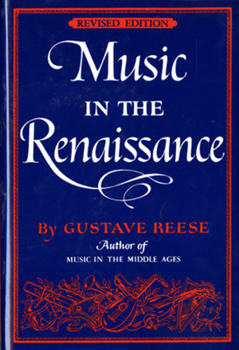Music in the Renaissance
For this study, the most fitting method has seemed to be one that might, with Browning in mind, be called the Ring and the Book technique. Part I deals at some length with the central musical language of the 15th and 16th centuries, which was developed in France, Italy, and the Low Countries, while Part II deals primarily with the music of other lands. This distinction has nothing to do with the comparative intrinsic merit of the various bodies of music, but only with the separation of local dialects from the central language. Indeed, such local productions as the 16th-century music of Spain and England provide artistic expressions quite in a class with the best music of France, Italy, and the Low Countries. The method of first taking into account only the central language has the advantage of permitting the main technical developments of the centuries under consideration to be described, as it were, in a straight line. Thereafter, the entire period is traversed again for each country dealt with in Part II. As a result, the same musical forms and processes of composition are treated several times, but each discussion is entered from a different approach and with the admixture of something individual--that is, national. The method offers advantages not only to the one whose task it is to sort out a huge amount of varied material, but also to the one who studies it: the student has the main historical outline presented to him more than once, but each time with important changes in the details by which it is filled in.
Format:Hardcover
Language:English
ISBN:0393095304
ISBN13:9780393095302
Release Date:November 1959
Publisher:W. W. Norton & Company
Length:1040 Pages
Weight:3.23 lbs.
Dimensions:1.8" x 6.5" x 9.6"
Related Subjects
Arts, Music & Photography History History & Criticism Movements & Periods Music RenaissanceCustomer Reviews
1 rating
This remains a very important text on this fabulous era of music.
Published by Thriftbooks.com User , 19 years ago
This is a fine book on a wonderful period in music history. The Renaissance era produced a revolution in music and many of us feel that this era was a high point in liturgical music. The music of this period was the subject of a great deal of research and performance in the 1960s, 1970s, and 1980s, but has fallen off somewhat in the past decade or two. That is a shame, because it is remarkably beautiful music. It is also music that can be played by informed amateurs. It requires an informed approach and great aesthetic sensibility, and the more skill the better. However, it doesn't require the kind of virtuosity that, say, Chopin or Brahms might demand. That is where this book comes in. It is a large book, but it is full of wonderful information about the music of these centuries and covers the various developments throughout Europe. Reese divides the period into two large parts: development and then diffusion. Within these parts he looks at what happens by geography. This is important because there were very different traditions and developments that slowly made their way to other courts. There are many musical examples that are translated into our musical notation (reading the old mensural notation is a specialized discipline of its own). Reese includes some illustrations, but not an abundance of them for a book of this size. If you don't know the music of Dufay, Josquin, Ockeghem, Brumel, Obrecht, and Isaac to name just a very few, well, you owe yourself the wonderful experience of the art of these geniuses. I am a huge fan of Josquin des Prez and consider him one of the supreme geniuses of music, but I am willing to discuss this with anyone with a different view. We used this book in music school as a text in music history courses on this period and I found it quite interesting and very helpful. It remains a very important text on this fabulous era in music history.






